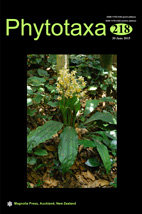Abstract
Two species of Navicula—N. volcanica and N. subwalkeri—are described as new based on LM and SEM observations and a comparison with similar species. Modern distributions of the new species are restricted to two adjacent headwater streams along the crest of the Cascade Mountains in western Oregon, USA. Both species are established as extant based on observations of cells with intact chloroplasts. Navicula volcanica has uniquely structured areolae with small external openings fused into narrow and occasionally interrupted transapical slits, while in most other Navicula species both the external and internal openings are separate and apically elongated. When observed under LM, N. volcanica resembles N. ludloviana, from which it can be distinguished by its rhombic valve shape, unprotracted apices, and larger size. We present here the first SEM images of N. ludloviana, showing that unlike N. volcanica, this species has ultrastructure typical for Navicula sensu stricto. We also present new distribution records for N. ludloviana and populations that eclipse published ranges of valve size and shape for this species. Navicula subwalkeri is similar to N. walkeri in that both species possess an internal axial plate that partially covers the striae. It is distinguished from N. walkeri by its narrower valves and axial plate, protracted apices, smaller central area, curved striae, and higher density of areolae. Navicula subwalkeri and N. walkeri are sympatric species, although N. walkeri is much more widely distributed. Additional distribution records are provided for N. walkeri, including the first record from the State of Washington.

